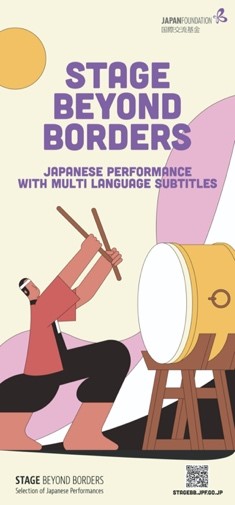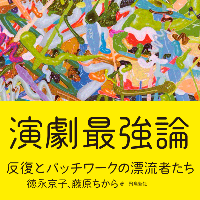【連載】ピックアップ×プレイバック 藤原ちから編(2019/12)―映画『解放区』
ピックアップ×プレイバック
2019.12.27
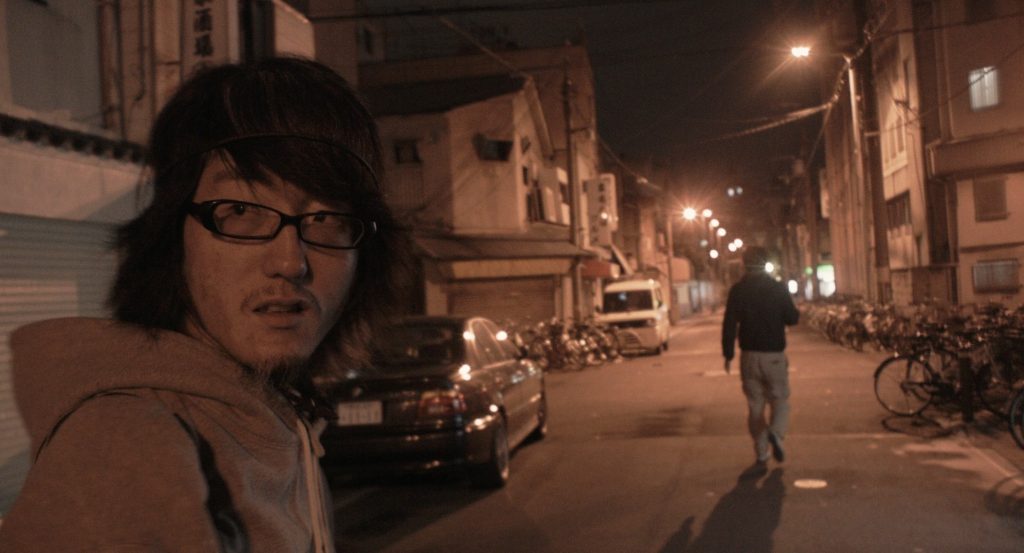
映画『解放区』より
*English is bellow the picture, you can translate into your language easily.
映画『解放区』
監督:太田信吾
各地で上映中
夏の台北で、太田信吾監督と出会った。舞台上での演技は観たことがあったが、実際話してみて、彼が魅力的な俳優であるのみならず、自分自身の言葉を持つアーティストでもあることを知った。その彼が大阪・西成を舞台にして撮った映画『解放区』が2019年秋に劇場公開された。
西成(釜ヶ崎)は日雇い労働者やバックパッカーの町として知られ、大手資本による再開発が計画されてもいる。いわば「特殊」な町である。すでに報じられているように、『解放区』は大阪市から内容の変更を迫られ、それを拒否した太田監督は助成金を返還した。そうした経緯もあってか、今回の劇場公開に至るまでにこの映画は5年の歳月を要している。しかし撮影から5年経った今も、この映画はまったく色褪せていない。むしろその「冬眠期間」のあいだに、この映画を受け入れるわたし(たち)の環境が整ったようにも思う。
この5年間で、芸術と社会をめぐる状況は大きく変化した。とりわけ「町を舞台にするアート」については様々な取り組みがなされ、アーティストや観客たちにじわじわと経験値が蓄積されてきている。しかし、それらの個々の経験は記録としては充分に共有されておらず、言説の形成もまだまだこれからという段階である。わたしが思うに、これは芸術と社会の関係に構造転換をもたらすような極めて重要な変化の過程であり、『解放区』はその過渡期に一石を投じている。わたしはこの映画をまだ一度しか観ていないし、その「石」を過不足なく受け止めきれているとは言い難い。しかしわたし自身「町を舞台にするアート」に携わっているひとりとして、少しでも言語化を試みることは重要だと考えている。そこで不完全を承知で、その投げられた「石」のスケッチを試みておきたい。
まず前提として、町は、劇場や美術館のように閉ざされた安全な空間ではない。もしもあなたが屋外に出て、単に町の景色をバックにしてパフォーマンスをしたいだけなら、場所によっては上演許可を得たり、天候を気にしたり、観客の安全を確保したりする必要があるにせよ、基本構造としては、劇場の中に美術セットを作り込むのと大きな違いはない。映画を撮る場合も同様だろう。
しかしあなたがもし、町に流れる時間に身を委ね、そこに実際に生きている人たちの生活に関心を持ったり、彼らと一緒にプロジェクトを遂行しようと思うなら、劇場や美術館で作品をつくるのとは異質な困難と喜びが待ち構えている。「つくる側/観る側」の境目も曖昧なものとなり、どこからどこまでを「作品」と呼べるかの範囲も不明瞭となる。あらかじめ計画した青写真通りにすべてを進行するのは難しい。あなたは様々な偶発的なハプニングに見舞われ、倫理的な問題にも直面することになるだろう。例えば町をリサーチすることで得た住民たちの物語を、自分の作品のネタにするべく搾取してしまったり。貧しい生活をしている人々を、中産階級の観客の見世物にしてしまったり。あるいは、プロジェクトに巻き込むことで町の人たちを疲弊させるようなことも起こりうる。
わたし自身、『演劇クエスト』というプロジェクトで、西成のように日雇い労働者の町として知られる横浜・寿町や東京・山谷を舞台にしたことがある。あるいはマニラのスラムや、安山(韓国)の移民街、デュッセルドルフの売春宿、香港のイリーガルな集落、バンコクの貧困層が住む路地……といった地域をそのリサーチ範囲に含んできた。「これはスラム・ツーリズムに陥ってはいないだろうか? アートのためと称して彼らの生活を搾取してはいないだろうか?」と問いかけながら。その都度、住民やコラボレーターたちと対話をしながら試行錯誤してきたが、模範解答は存在しない。自分なりの倫理観を追究しながら、ギリギリの境界線上で揺れ動きつつ作品をつくり続けるしかないのだろう。
この点において『解放区』はかなり際どい映画である。撮影にあたって太田監督が町の人たちとどのような交渉や約束をしたのかは知りえないし、この映画がどの程度、西成という町の「タブー」を踏み破っているのかもわからない。わたしにとってはヒヤヒヤするようなシーンがいくつかあったが、町でカメラを回すとなると、ある種の図々しさは必要なのかもしれない。しかし強調しておきたいのは、わたしはこの映画のカメラを不快には思わなかったし、むしろ「凄い……」と唸らされたという事実だ。
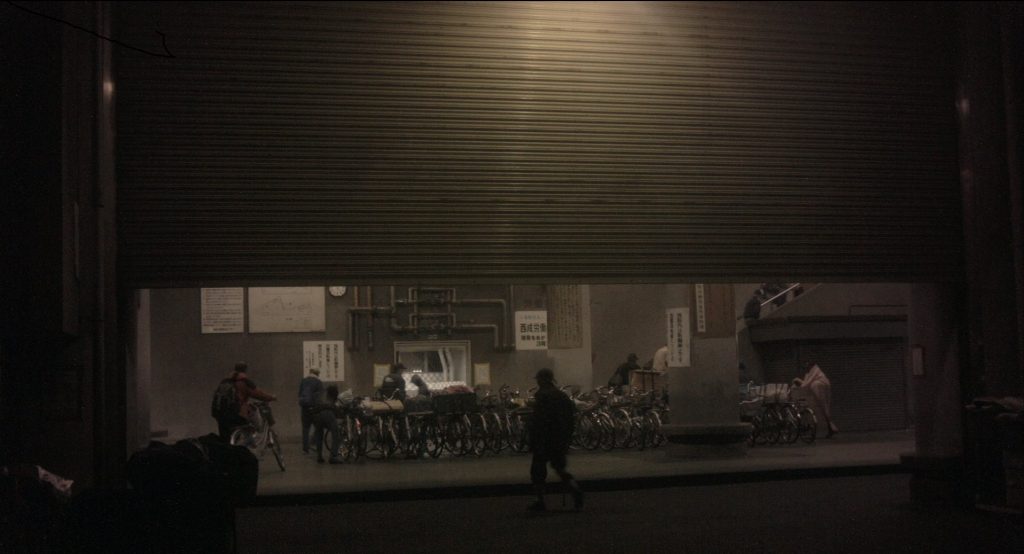
映画『解放区』より。このあいりん労働福祉センターは2019年3月に閉鎖された。
「この町の魅力を描きたい」とか「この町の実態を描きたい」というだけのモチベーションでは、この映画を撮るのは不可能だったとわたしは思う。もっとエゴイスティックなアーティストとしての強い欲望が、この映画を生み出したのではないだろうか。といってもそれは「内にある何かを表現したい」という性質のものではなく、むしろ「外にある何かを変革したい」という、外部の他者へと向かっていくような欲望に思える。
太田信吾監督は自身もこの映画に出演し、須山という青年を演じている。スヤマは当初、ややナイーブで頼りない人物として登場するのだが、映画の中盤以降、彼はそのキャラクターを脱ぎ捨てて不安定な存在へと変貌し、この映画の中で(この映画によって)何かを起こそうとし始める。例えば銭湯に向かうシーンが象徴しているように、彼は共演者(そして観客)を挑発し、撹乱することで、この映画をどこかへ連れていこうとしている。
この映画のラストシーンで、観客であるわたしは、須山に導かれてある部屋にたどり着く。そこで行われるやりとりは、一見、須山=太田監督の自傷行為のようにも見えるのだが、わたしには、あれは自己破壊のための「痛み」ではなく、この世界に蔓延している虚偽を撃ち破る、変革のための「痛み」に思えたのだった。
たとえ、わたし(たち)が見ないことにし、聞こえないことにし、感じないことにしたとしても、この世界には闇が存在している。「痛み」はその闇と行き来するための通路にもなりうるだろう。明るさばかりを求める社会の欺瞞に耐え難くなった時、人は闇を必要とするが、その闇に到るための「痛み」を得ようとして、しばしば暴力的な手段によって自己や他者を傷つけることになってしまう。だからこそ、その代替手段として、人間の世界には芸術が必要とされてきたのかもしれない。暴力の代行……。それは時に、さらなる暴力を煽り立てるプロパガンダとなる危険も孕んではいるが、時に、暴力を解除する機能も果たす。例えばこの映画『解放区』がそうであるように、暴力ではないやり方で「痛み」を生み出すことによって、闇に葬り去られたものたちの存在を人々に気づかせ、虚偽の明るさに満ちた世界に風穴を開けることができるのではないか。
世界的なアートのマーケットが成熟し、アートの社会的意義もかつてよりは認められるようになった現在、適度な刺激と栄養を与えてくれるサプリメントとしてアートが消費されていく時代がやってきつつあるのかもしれない。それはそれで、アーティストに仕事が発生し、彼らの生活が支えられるのだとすれば、そういう時代もまた芸術史における過渡期としては悪くないのかもしれない。しかしそこには欺瞞があるように思う。社会にとって無害なアート。少なくとも、そのようなサプリメントでは救われない人たちがいる(わたしもそのひとりだ)。
ちょうどわたしが『解放区』を観た日、女優の沢尻エリカが麻薬取締法違反の容疑で逮捕された。そしてすぐに、彼女が出演する予定だったテレビドラマのシーンがカットされることになり、損害額がいくら……という報道が流れるようになったが、正直、わたしはそのニュースを「いつもの風景」としか感じなくなっていた。こうしてまた誰かを切り捨てることで、わたし(たち)は安心安全な社会という幻想をキープし、その中での常識にがんじがらめになって思考停止に陥っていくのかもしれない。もはやどんなにひどいことが起きても、わたし(たち)は感覚を麻痺させ、いつものように他人事として扱い、適当なコメントを付けて受け流していく。あるいはSNSで正義感と怒りを爆発させ、罵詈雑言をぶつけ合い、その画面の向こう側に誰がいるのか想像できなくなりつつある。こうやって麻痺していく環境に、どうやったら風穴を開けられるのだろうか……。逮捕のその日、太田監督はtwitterに「沢尻エリカさん、ご出所されたら映画『解放区2』ご一緒したいです」と書いている。一瞬、なんて荒唐無稽なことを、と思ったが、よくよく考えてみれば、まだ生まれていないその映画は、この世界が本当に必要とするものになるかもしれない。
Movie “Fragile”
Director; Shingo Ota
In Taipei of this summer, I met a film director, Shingo Ota. I’ve seen his acting on stage, but when I talk with him, I realize he is not only an attractive actor, but also an artist who has his own words. The movie “Fragile (解放区)”, which he shot in Nishinari of Osaka, was released to theaters in the autumn of 2019.
Nishinari (or Kamagasaki) is known as a town for day-laborers and backpackers, and there are plans for redevelopment by a major capital. So it’s a “particular” town. As some media reported, Osaka City government was forced to change the contents of the “Fragile”, but Shingo rejected the change and returned the grant. Probably because of this reason, this movie has taken five years to reach this theatrical release. But five years after filming, the film has not faded at all. Rather, during this “hibernation period”, the environment for me (us) to accept this movie has been prepared.
Over the last five years, the situation around art and society has changed dramatically. In particular, various approaches to “art in a town” have been made , and artists and audiences are gradually gaining the experience. However, their individual experiences have not been fully shared as archives, and the discourses are not yet to be created. In my opinion, this is a process of crucial change that will bring a structural change in the relationship between art and society, and “Fragile” is throwing a stone into this transition. I have watched this movie only one time, and it’s hard to say that I could accept the “stone” without any shortage. However, as one of the people related to “art in a town”, I think, verbalize is important. Therefore, I want to try to sketch the “stone” even if it’s imperfect.
First of all, a town is not a closed and secure space like a theater or a museum. If you go outdoors and just want to perform with a city view on your back, in terms of basic structure, there is not much difference from creating scenography in a theater; even you may need to get a performance permit, care about the weather, and keep the audience safe in some places. About the film shooting, we can think as the same.
But if you want to spend your time in a town, and be interested in the lives of those who are there, or make a project with them, you will get another difficulties and joys which are different from creations in a theater or museum. Then the border between “creator / audience” becomes vague, and also the range of “work” becomes unclear. It’s difficult to do everything according to the blueprints. You will be hit by various accidents and face some ethical issues. For example, you may obtained the stories of the residents through the research and exploit them. You may make poor people pageantry for middle-class audience. Or, you may exhaust people who are involved in your project.
I myself have been making a project called “ENGEKI QUEST”, set in the towns of Kotobuki-cho (Yokohama) and Sanya (Tokyo), which are known as towns for day-laborers like Nishinari. And also I have been including areas such as a slum in Manila, an immigrants district in Ansan (Korea), a brothel in Düsseldorf, an illegal settlement in Hong Kong, and poor alleys in Bangkok. I asked myself, “Isn’t it a slum tourism? Isn’t it exploiting their lives for art?” Each time, I tried and errored while talking with the residents and my collaborators, but there was no model answer. There is no other way but to seek my own ethical standards and continue to create works while swaying on the boundary.
In this regard, “Fragile” is a very borderline movie. I don’t know what kind of negotiations or appointments which the film director Singo made with the townspeople during the film shooting, nor how much this movie has broken through the “taboo” of Nishinari. For me, there were some anxious scenes, but if someone shoot movie in a town, it might need some impudent mind. Just I want to emphasize that I didn’t feel uncomfortable about the camera of this movie, and rather I was really amazed.
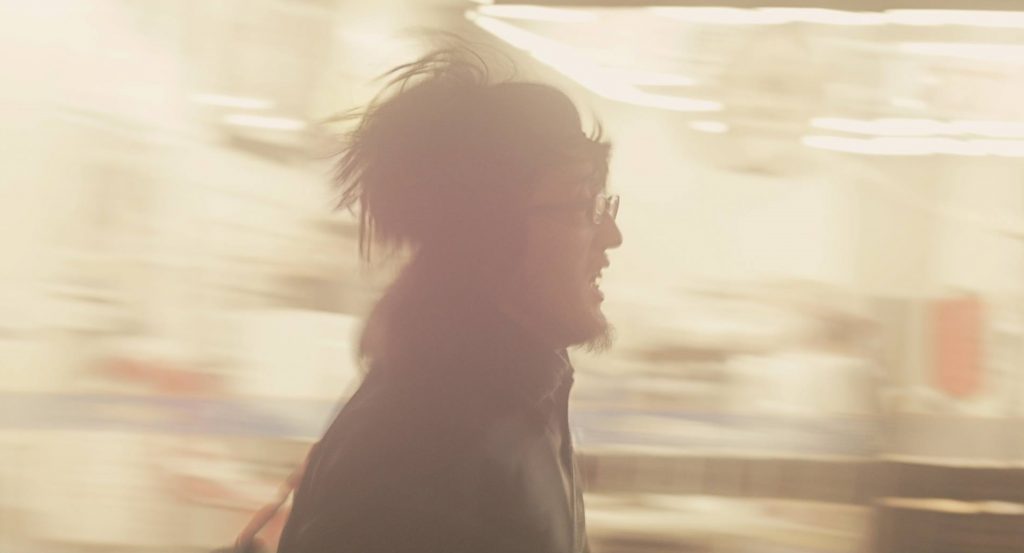
映画『解放区』より
I think it was impossible to make this movie with just only the motivation to “describe the charm point of this town” or “describe the reality of this town”. Perhaps the strong desire as a more egoistic artist created this film. However, it does not mean “want to express something inside”, but rather “want to change something outside”.
The film director Shingo Ota himself also acted in this movie as a young man named Suyama. Suyama initially appears as a omewhat naive and unreliable person, but since the middle of the movie he has stripped the character and transformed into an unstable entity, and cause something in (by) this movie. For example, as symbolized by the scene where they are going to a public bath, he is trying to bring the movie somewhere by provoking and subversing the co-actors (and the audiences).
In the last scene of the movie, I the audience guided by Suyama and arrived at a room. At first glance, the acting there seems like Suyama=Shingo’s self-harm, but to me, it’s not a “pain” for self-destruction, but a “pain” for change and shooting the fake that spreads in this world.
Even if I (we) do not see, do not hear, do not feel, there is darkness in this world. “Pain” can be a passage to and from the darkness. When people cannot become to endure deception of a society which demands only light, people need darkness. But in order to obtain the “pain” to reach darkness, often they hurt themselves and others by violent ways. That is why the human world has needed art as a substitute. Substitute of violence… It sometimes carries the danger of becoming a propaganda that fuels further violence, but sometimes it also functions to dislocate violence. Like this movie “Fragile”, by creating “pain” without violence, it can make people aware of the existence of those buried in darkness, and open a window in the world filled with fake light.
Now the global art market has matured, and the social value of art has been more appreciated than before. The era may be coming; art is consumed as a supplement that provides moderate stimulation and nutrition. If artists can get works and their lives are supported, that era may not be a bad transition in art history. But there seems to be deception: art harmless to society. At least, there are some people who cannot be saved with such supplements (I am one of them).
Just the day I watched “Fragile”, a Japanese famous actress Erika Sawajiri was arrested for violating the Drug Control Law. Soon after, the scene of the TV drama in which she was going to appear was cut off, and her amount of damage was reported. To be honest, I just felt the news as “usual scenery”. By cutting off someone again and again in such a way, I (we) may keep the illusion of a safe and secure society, and may stop thinking with the common sense. No matter how bad things happen anymore, I (we) will paralyze our sensations, treat them as unrelated matters, and ward off with inaccurate comments. Or I (we) will explode the sense of justice and anger on SNS, throw abusive words each other, and cannot imagine who is behind the screen. How can I (we) make a window in such a paralyzed environment? On the day of her arrest, the director Singo wrote on Twitter that “Ms. Erika Sawajiri, when you come out from the prison, I would like to make the movie”Fragile 2” together with you”. For a moment, I thought what a ridiculous thing he said, But after considering deeply, now I can say, the movie which hasn’t been born yet may be the one which this world really needs.
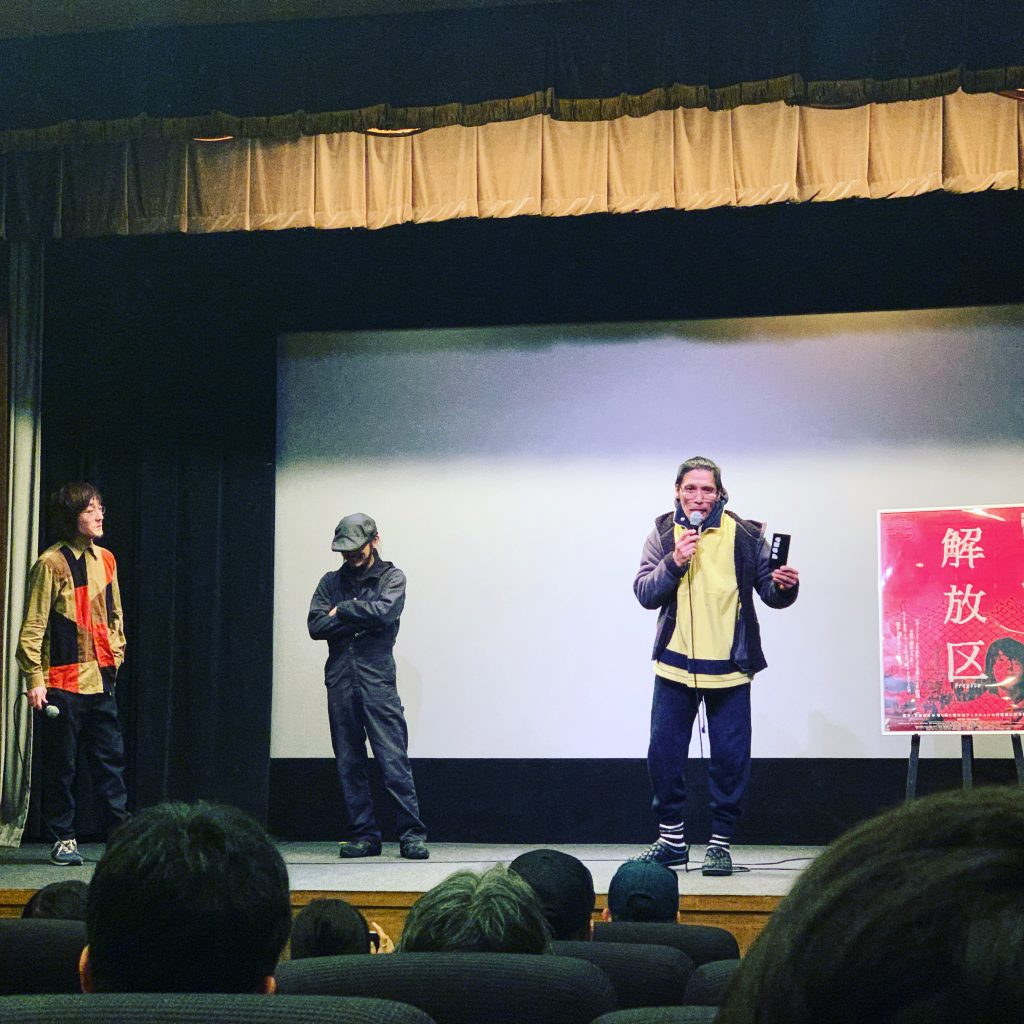
2019年11月16日、大阪・第七藝術劇場での舞台挨拶。筆者撮影

